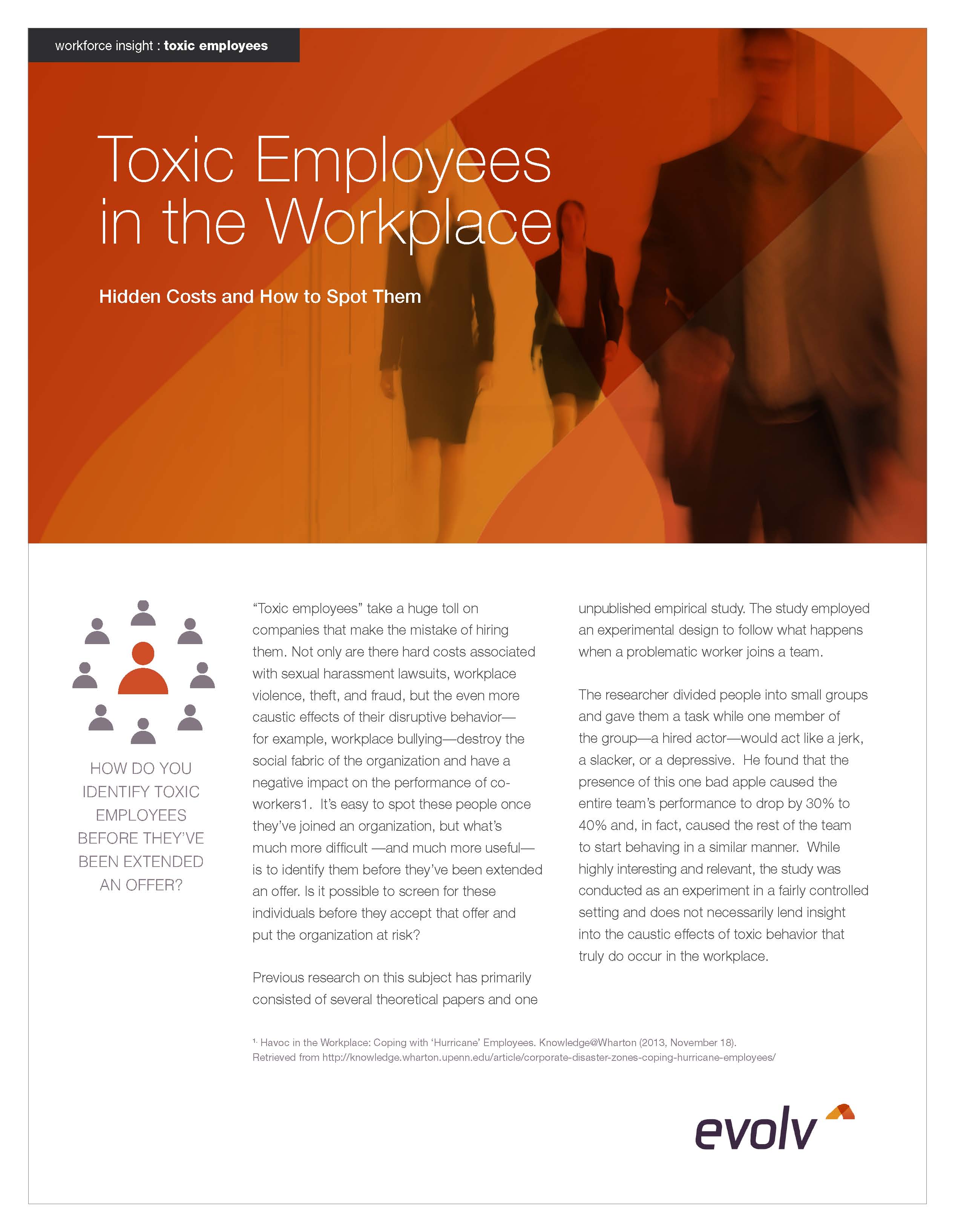Toxic Employees in the Workplace

Citation: Housman M. Toxic Employees in the Workplace, San Francisco, CA: Evolv, Inc., 2014.
Abstract: “Toxic employees” take a huge toll on companies that make the mistake of hiring them. Not only are there hard costs associated with sexual harassment lawsuits, workplace violence, theft, and fraud, but the even more caustic effects of their disruptive behavior—for example, workplace bullying—destroy the social fabric of the organization and have a negative impact on the performance of co-workers. Yet there is very little empirical research on the precursors and outcomes of toxic behavior in the workplace. In order to fill this gap, we leveraged our massive data network in order to answer two fundamental questions:
1) Can we identify the factors that make someone likely to engage in toxic behavior?
2) Can we quantify the impact that toxic employees have on their co-workers?
To answer these two questions, we utilized a dataset of approximately 63,000 hired employees spanning approximately 250,000 observations, and identified those who were terminated for reasons related to toxic behavior. Applying a variety of econometric techniques to the data, we discovered the following:
- Self-proclaimed “rule followers” are 33% more likely to be toxic employees.
- Science-based hiring assessments can help screen out toxic employees.
- Low scores on Attendance & Dependability and Service Orientation are most predictive of toxic behavior.
- Toxic behavior is contagious and employees are many times more likely to engage in toxic behavior if they’re exposed to other toxic employees
- Good employees are 54% more likely to quit when they work with a toxic employee.
Our study is the first of its kind that uses actual workplace data to explore the impact of toxic employees. We find that in spite of their relatively low incidence (3-5% of all workers), their impact on co-workers and office culture is much more noticeable and much more costly than is immediately apparent. To that end, it is absolutely critical that employers focus their attention on avoiding toxic employees in the first place and, alternatively, do their best to identify and eradicate cancerous employee behavior quickly, before it has ripple effects on the bad behavior and voluntary departure of co-workers.
